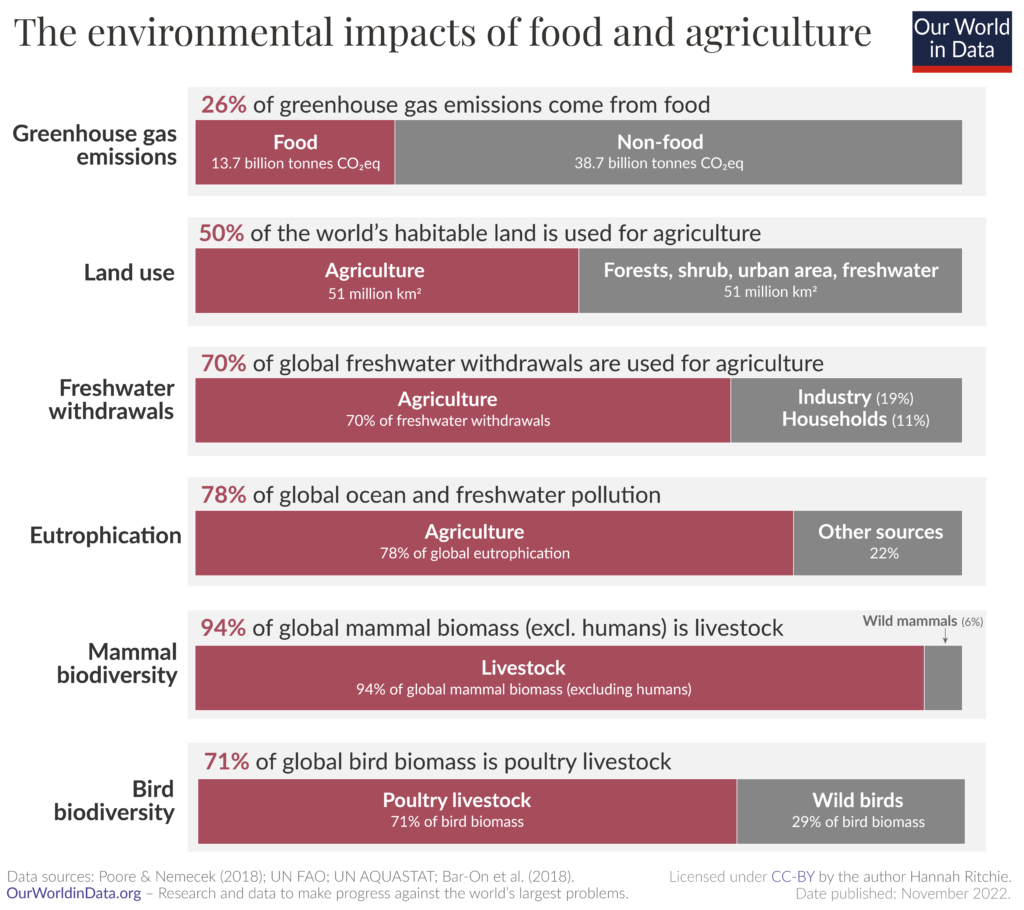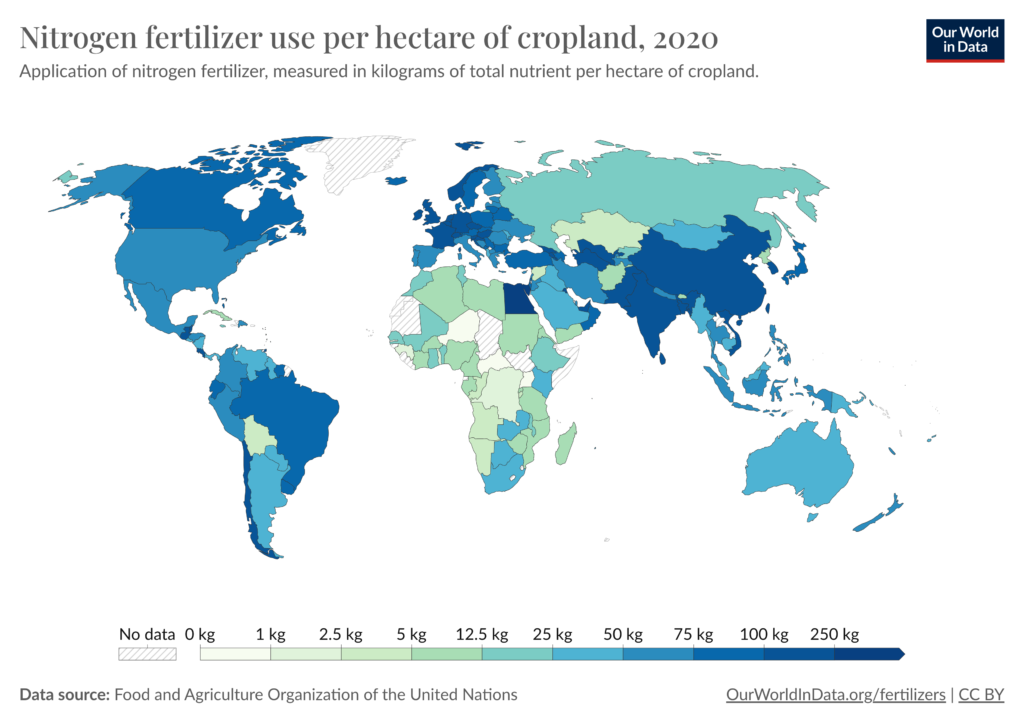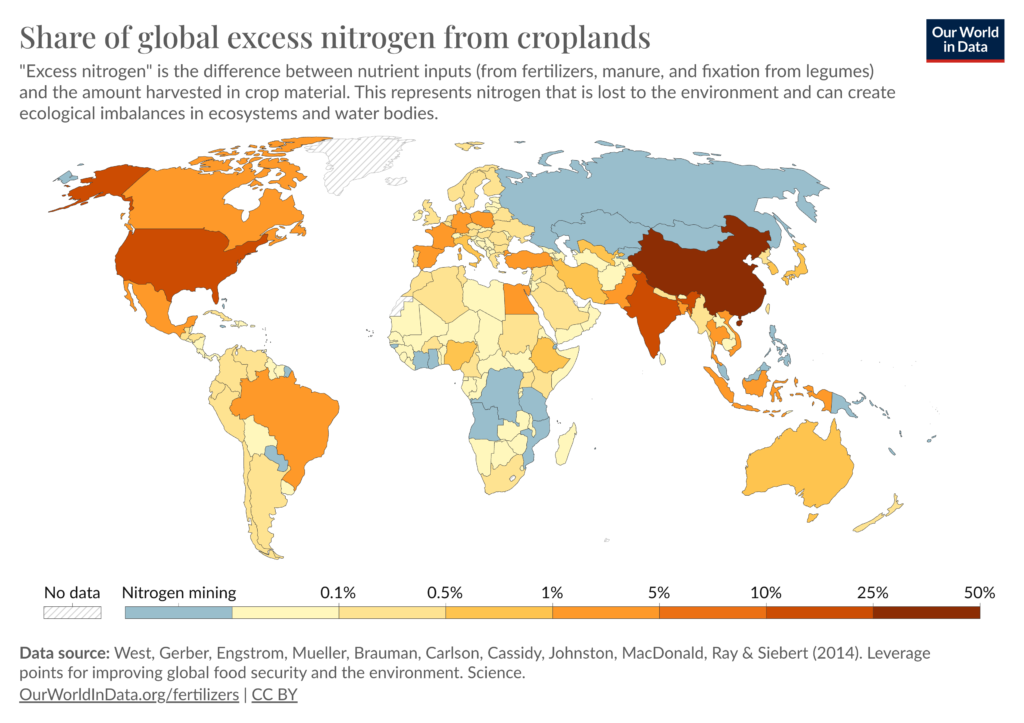Earth’s population is rapidly rising, and with it the demand for food. Unfortunately, our current methods of food production are largely inefficient and wasteful. 26% of greenhouse gas emissions stem from food production, while agriculture consumes 50% of the world’s habitable land and 70% of freshwater withdrawals. Clearly, this model is unsustainable, both in terms of resource utilization and environmental impact.

Nutrient pollution refers to the excessive presence of nutrients, primarily nitrogen and phosphorus, in water bodies. They are introduced into the environment through sources like agricultural runoff, industrial discharges, and wastewater. Nitrogen and phosphorus are essential for plant growth, but an excess can trigger a process known as eutrophication. Eutrophication leads to the accelerated growth of algae which consume oxygen, creating dead zones where oxygen levels are critically low. The absence of oxygen endangers fish and other organisms, disturbing the surrounding ecosystem as well. Addressing nutrient pollution requires coordinated efforts to reduce nutrient inputs, improve agricultural practices, and enhance wastewater treatment to safeguard the health of aquatic environments.

The agricultural industry is responsible for 78% of global ocean and freshwater eutrophication. Densely populated countries like China see the worst of eutrophication because of the high demand for food. While fertilizers are essential for meeting food demand, China’s excessive nitrogen production only worsens the state of their water bodies. This dilemma is not unique to China, with many countries worldwide struggling to sustain their population while sustaining the environment.

Modern technology is paving the way towards a sustainable world, and the agriculture industry is no different. Precision farming involves the use of technology to optimize resource allocation and reduce intensive labor. For example, GPS guidance systems minimize operator fatigue while precisely managing field operations. Other systems measure data on soil type, nutrient levels, pH, temperature, and moisture content, enabling tailored crop care. Precision technologies have shown to be 14% more efficient in determining fertilizer placement, while lowering fossil fuels burned and water consumed by 16% and 21% respectively. This is the future and the key to sustaining our population and our planet for years to come.
Addressing the challenges of feeding a growing population while safeguarding our environment requires a concerted effort towards sustainable agricultural practices. Implementing precision technologies and continuous innovation will help mitigate the challenges of pollution and eutrophication. By optimizing resource allocation, reducing waste, and minimizing environmental pollution, we can cultivate a future where food security does not come at the cost of the environment. It is imperative that we invest in these solutions to ensure a prosperous and sustainable future for upcoming generations.
Citations:
Maricle, L. (2022, June 29). The next wave in agricultural innovation – wa grains. Washington Grain Commission. https://wagrains.org/articles/the-next-wave-in-ag-innovation/
Three emerging technologies that will shape Washington State’s future. Washington Business Alliance. (2022, March 17). https://wabusinessalliance.org/three-emerging-technologies-that-will-shape-washington-state-s-future/
Keltz, Colleen. “Stormwater.” Stormwater – Washington State Department of Ecology, ecology.wa.gov/Water-Shorelines/Water-quality/Runoff-pollution/Stormwater. Accessed 28 Dec. 2023.
Ritchie, Hannah, Max Roser, et al. “Fertilizers.” Our World in Data, 26 Oct. 2022, ourworldindata.org/fertilizers.
Ritchie, Hannah, Pablo Rosado, et al. “Environmental Impacts of Food Production.” Our World in Data, 2 Dec. 2022, ourworldindata.org/environmental-impacts-of-food.
Ritchie, Hannah. “Excess Fertilizer Use: Which Countries Cause Environmental Damage by Overapplying Fertilizers?” Our World in Data, 7 Sept. 2021, ourworldindata.org/excess-fertilizer.
US Department of Commerce, National Oceanic and Atmospheric Administration. “What Is Nutrient Pollution?” NOAA’s National Ocean Service, 1 Sept. 2009, oceanservice.noaa.gov/facts/nutpollution.html.

